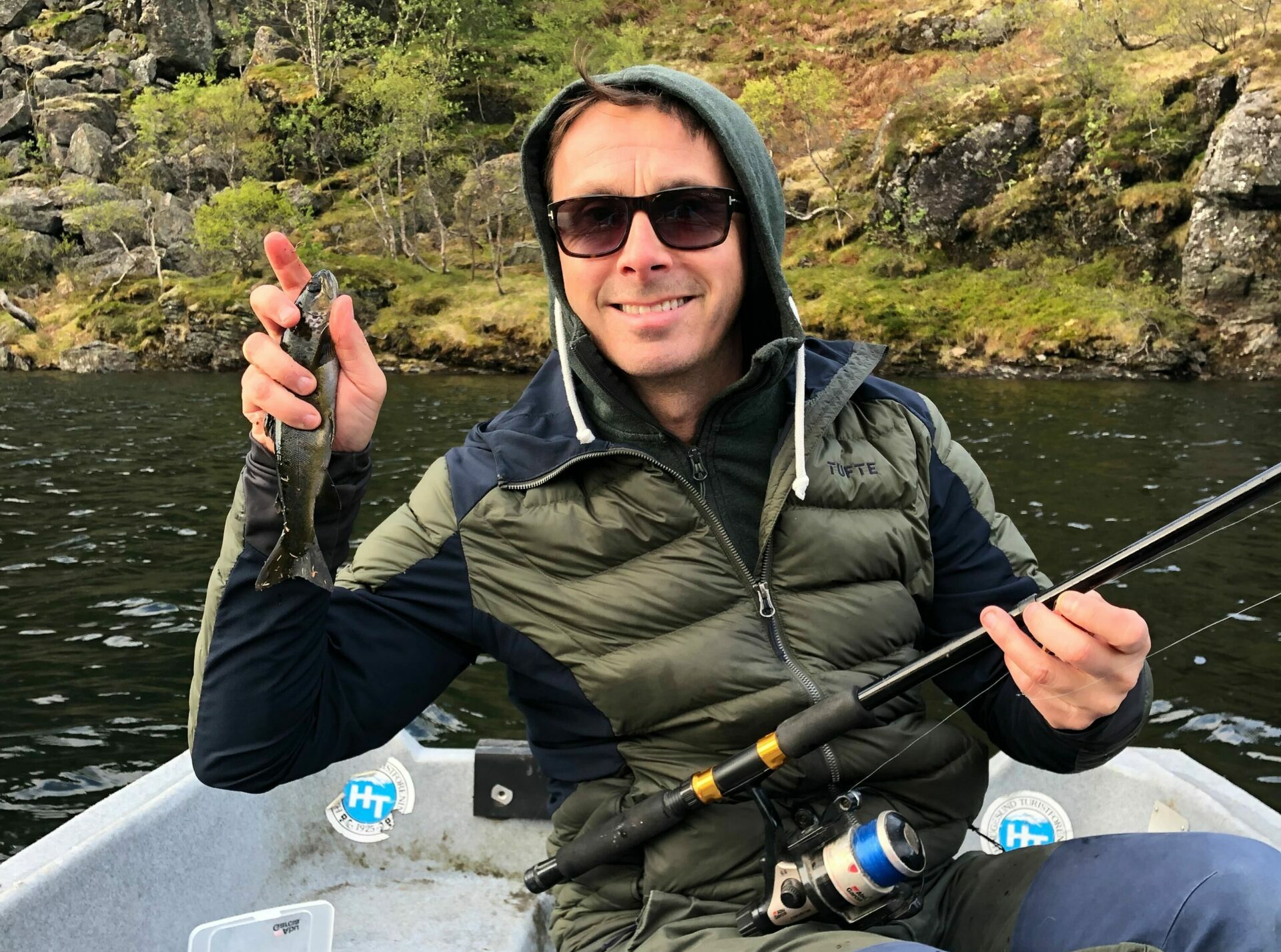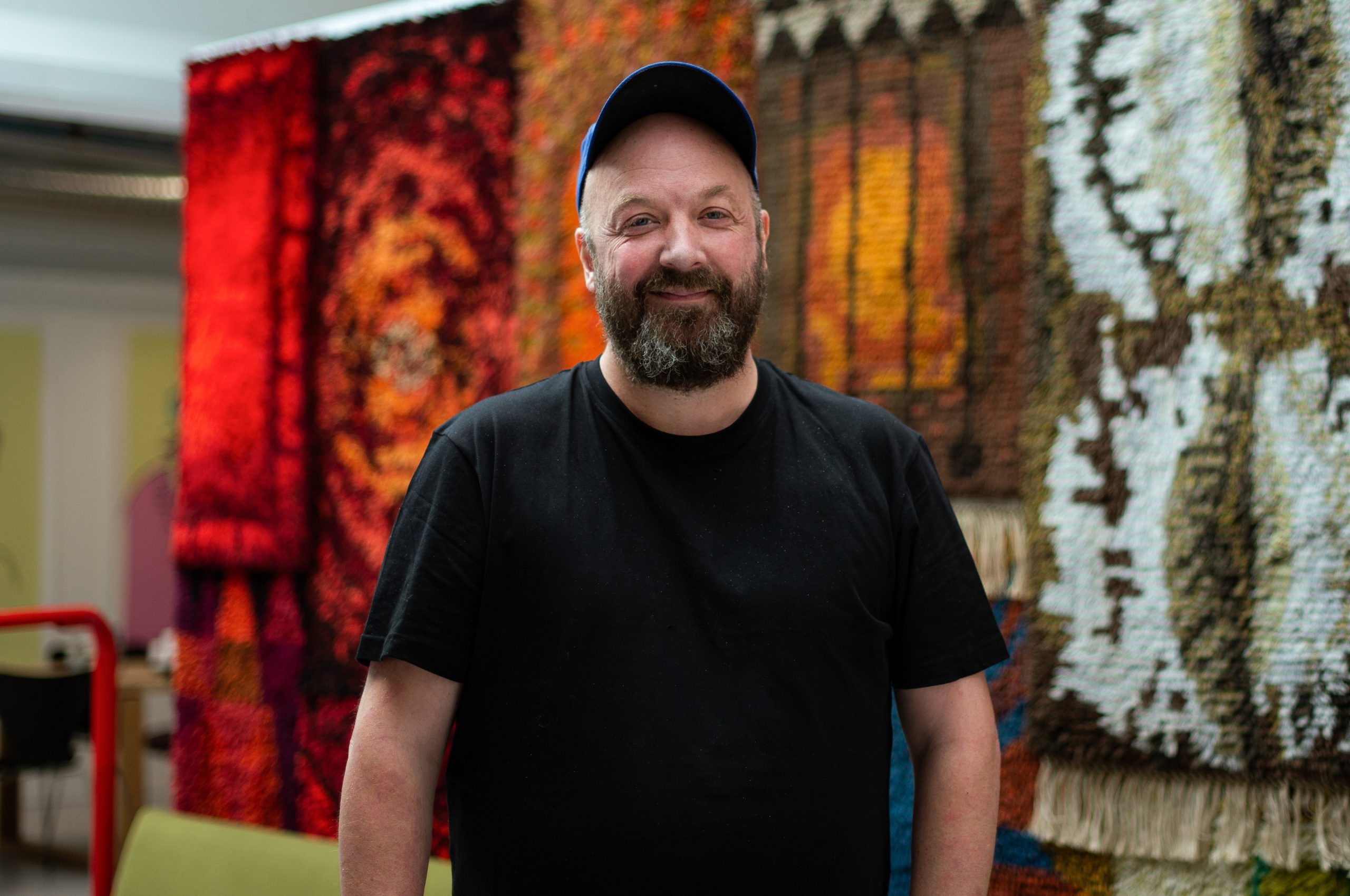The Client
Compera
A platform offering simple sustainability reporting for companies, including analysis of their entire supply chains.
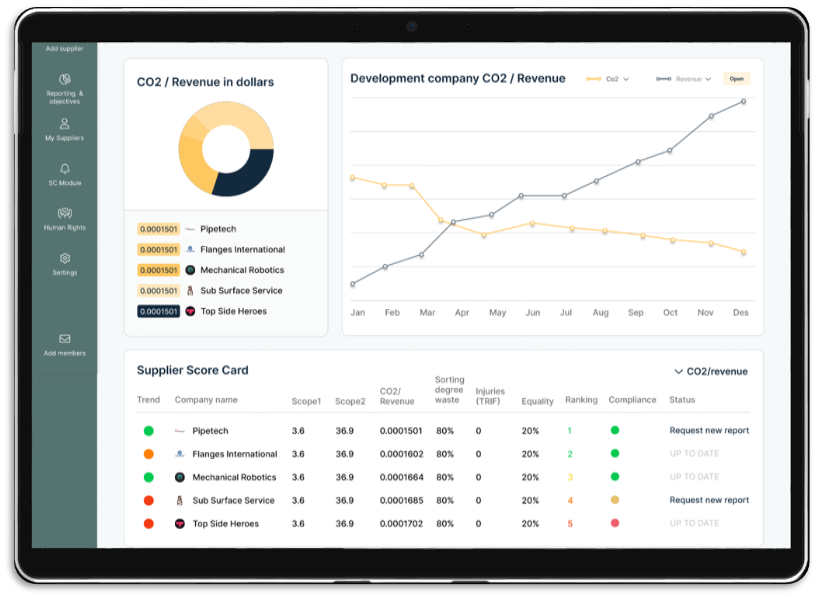
The Big Idea
To create a single destination for companies – and their suppliers – to easily collect, validate, and present their ESG (environment, social and governance) and sustainability data.
This platform needed to:
- enable companies to get control of their sustainability data and meet legal and customer reporting requirements
- help big companies consolidate and compare firms from across their entire supply chain, turning sustainability into a criterium for supplier selection
- ease the reporting burden on suppliers – and stop them being excluded from tenders – by making reporting simple, reasonable, and repeatable
In creating this ground-breaking service, Compera aims to build a simpler and more transparent ecosystem for sustainability reporting.
This will, in turn, help industry reduce its environmental footprint and be prepared for ever-changing regulation.
Project Summary
To date, Compera has used two of Smpl’s core offers:
- Our business advisory service helped clarify and focus Compera’s approach to its brand, platform, and system, using our team of highly-experienced business leaders
- Our 5-day prototyping service delivered a clickable prototype that became a key tool for winning customers, getting wider stakeholders on board, and even winning awards
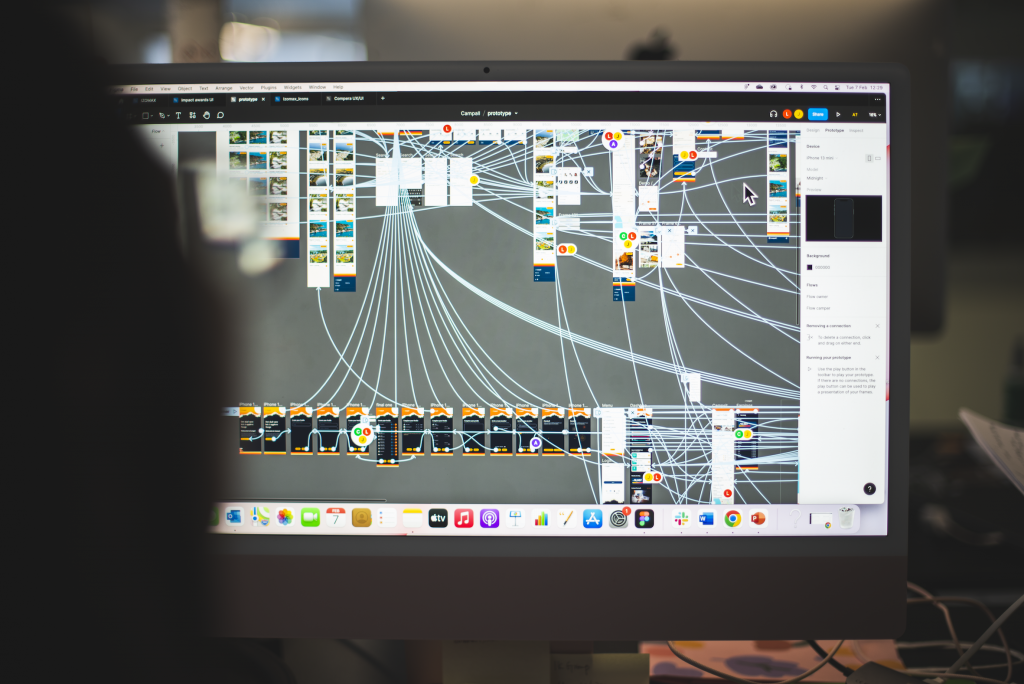
What did the client think?
“Working with Smpl was a dream start for a start-up. Your advice and prototype helped get us in the room and win contracts – and an award!
“Smpl has helped us turn something highly complex into something simple and visually beautiful; something that potential customers can quickly understand and engage with.
“You helped us make the system easy to navigate and made communication with stakeholders and customers a lot less complicated.”
“I would not recommend Smpl… to our competitors! But I would seriously recommend Smpl to other companies, whether they’re start-ups or established companies that need help developing their solutions.”
Lene Koll, CEO
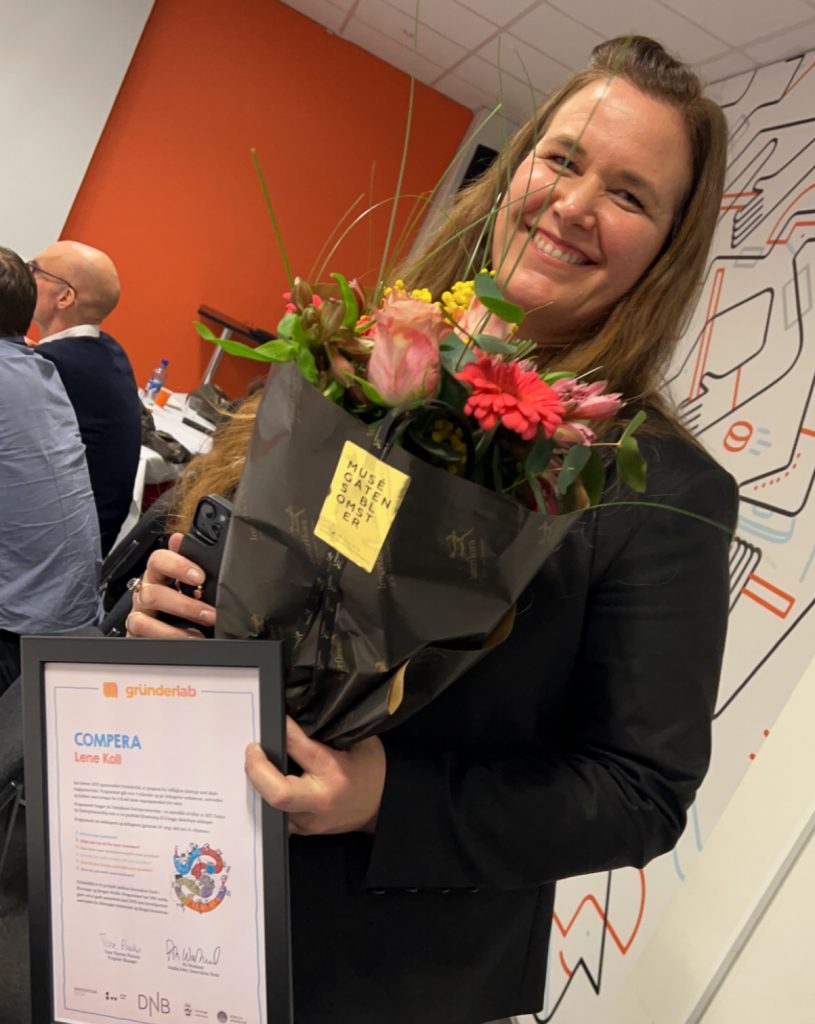
The Project In More Depth
What problem needed to be solved?
“The problem today is two-sided,” says Lene Koll, CEO of Compera.
“On one side, the EU now requires all large companies to include their value chain in their climate accounting.
“Those required to do the reporting represent only 1% of the companies in Europe.” she adds.
“However, the reality is that they must now obtain information from all companies in their value chain – and that means a large proportion of the 99% of companies that do not have reporting requirements today.
“So even though sustainability reporting is not an official requirement for the 99%, it quickly becomes a customer requirement,” Lene continues.
“The problem is many of these businesses are unsure of how best to collect, analyse and present their own information, as well as suppliers’ data.”
Lene points out that many suppliers – particularly those in the SME market – are even worse off.
“Even those who already report on sustainability find the work challenging, resource-intensive, and that it does not yield results,” she says. “But many SME’s don’t know where to start when customers – or potential customers with lucrative tenders – demand sustainability data.
“This means they can easily miss out on contracts; and it’s made worse because reporting mostly takes place in Excel spreadsheets, which can take ages – and it’s always done differently.”
The solution:
Compera saw an opportunity to create a solution that delivered:
- a top-down service for companies needing to track and report on their whole supply/value chain
- a bottom-up solution that helps SMEs in the supply chain to collect and deliver data to their clients
“We wanted to ensure companies could access a simple platform for consolidating and comparing firms in their supplier portfolio,” Lene says. “If you can do that then sustainability becomes a competitive element and one of the criteria for supplier selection.
“On the other side of the coin, we wanted to ease the reporting burden for suppliers by making reporting and information sharing simple, reasonable and repeatable.”
Getting started
Lasse is a start-up expert who has created several businesses himself. Those include ForgeRock, which became a unicorn (with a $2.8bn valuation) when he floated it on the New York Stock Exchange last year.
Our relationship began with Compera’s team meeting members of Smpl’s business advisory board, including Lasse Andresen.
“Lasse’s background and experience made him perfectly placed to offer advice on Compera’s vision, strategy and tactics,” Lene says.
After discussions and workshops, led by Smpl’s Head of Design (and King of Workshops) Andreas, we created a super-fast prototype, using our 5-day Prototype Method.
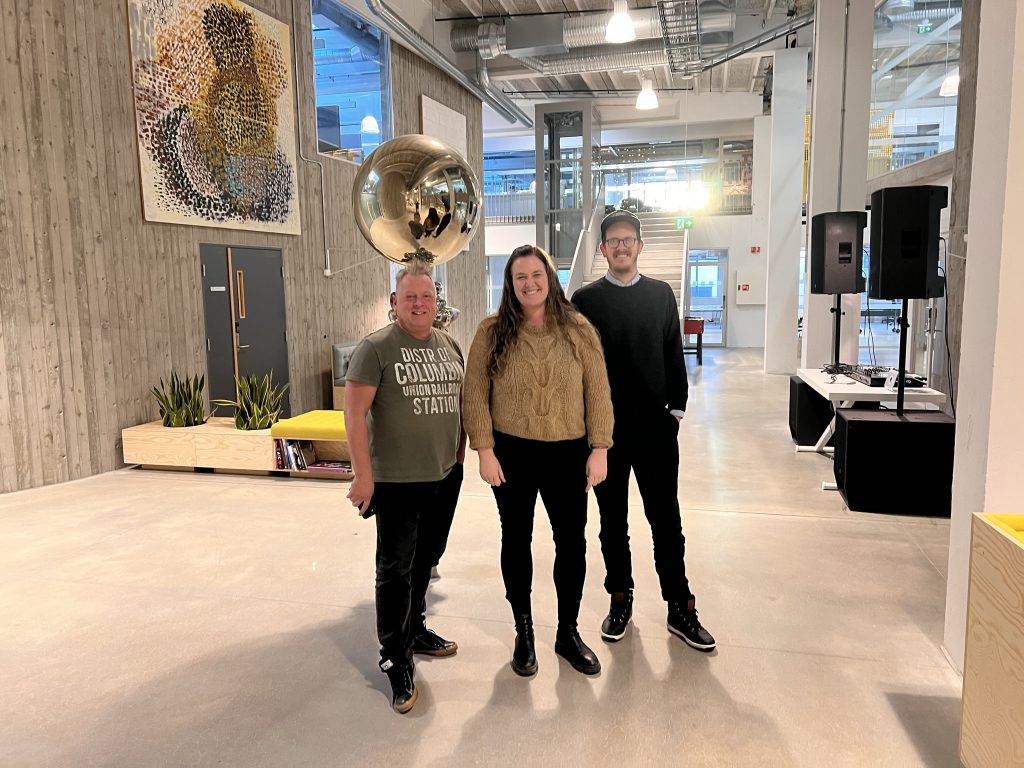
Award-winning
“We gained access to Smpl’s entire arsenal of expertise,” Lene says. “After the workshop and some great discussions we got a clickable prototype. And that contributed to our first contract.”
That contract is with one of the biggest firms on the oil and gas industry, Equinor.
“We particularly like how easy it is to understand and navigate the prototype, which we’ve found customers really appreciate.
“It’s become a key part of how we present Compera to customers and other stakeholders. It helped us win our first award too.”
“The prototype has also given us a better understanding how to order the next phase of system development,” Lene adds. “Our experience indicates that if the order is bad, the project often becomes much more expensive. So, we think we’ve probably saved a lot of money here.
“Now we are ready to take the next step and develop a Minimum Viable Product (MVP) version of the system for our pilot customers.”
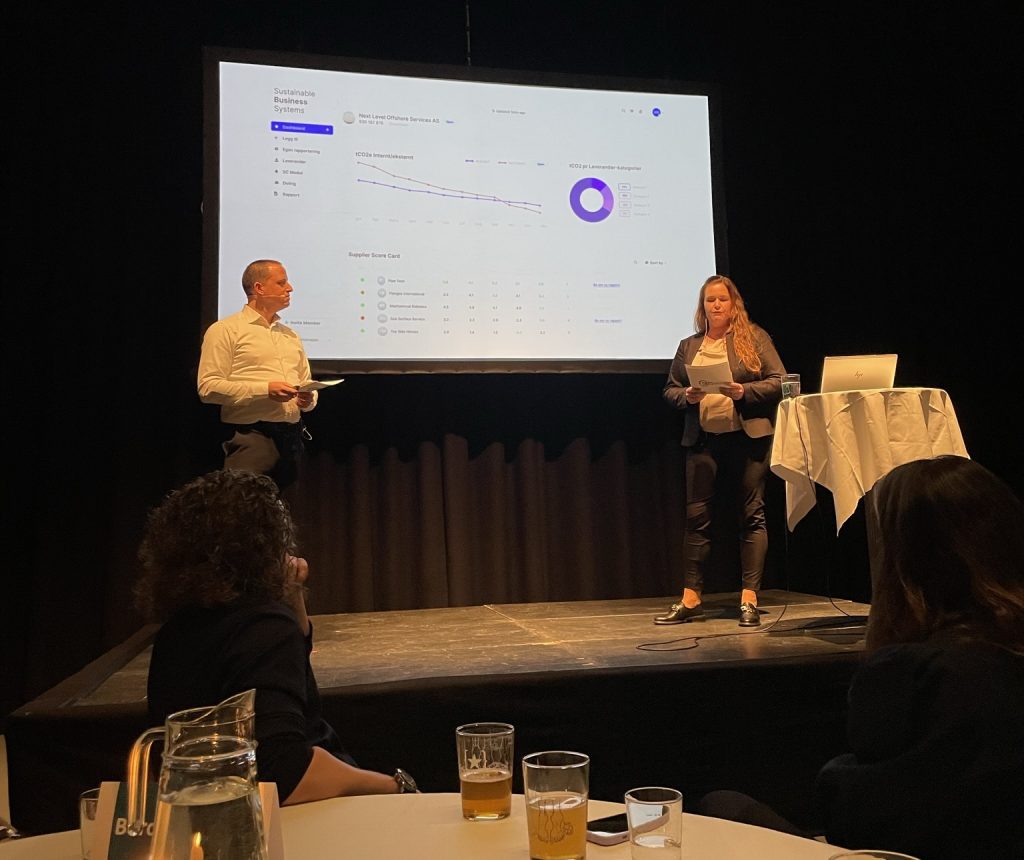
The Big Question…
What did Compera think of working with Smpl…?
“One of the big differences between Smpl and other agencies is you really got the problem we were trying to address,” says Lene. “It can be a real showstopper when an agency doesn’t understand what it’s building.
“Smpl’s strategic advice made it easier to explain our solution in a jungle of other systems and market noise. That gave us greater weight and impact in dialogue with customers and other stakeholders.
“The prototype has won us meetings and got us up the management chain,” Lee adds. “That’s because potential stakeholders could clearly see what we were working towards. They could also see we had a system they could use and benefit from.”
“We also predict the prototype is going to save us a lot of time and money as we go forward. It’s designed so we can adapt to feedback from customers and quickly adjust the content during development.”

